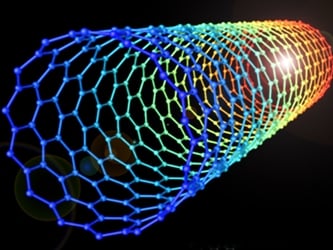Ultrahydrophobic materials: from the nature to the industry

Is possible that a drop of water bounces over a surface without wetting it? An interaction exists among solid and liquid materials that makes difficult to imagine it. However, science has developed huge advances in the last decades in this field, opening a wide variety of possibilities for the industry.
Ultrahydrophobic surfaces are based on the lotus effect, discovered in the seventies through the microscopic observation of the natural hydrophobic properties of the lotus flower leaves. The surface of this plant is composed by the adhesion of non-polar substances, such as fats and waxes and they have a rough surface that causes the effect of hydrophobicity, also known as fakir effect, for obvious reasons. Because of these characteristics, lotus flowers grow always clean, even in muddy areas. In the mid-nineties, Wilhelm Barthlott imitated and patented the principle registered as the “lotus effect” thanks to the use of nanotechnology, the necessary base in which surfaces with hydrophobic characteristics are based.
The researches in this field are currently focused on searching the highest level of repulsion to water of a surface, in other words, to create the ideal superhydrophobic surface, to waterproof the surfaces, to get extremely repellent-to-water materials and to avoid the action of water.
How can we get that?
In contrast with hydrophobicity that is a chemical property, superhydrophobia is a property basically physical based on, on the one hand, the generation of a contact angle of the drop of water with the surface and, on the other hand, the obtaining of this contact angle to have the highest possible inclination in order to move away the drop as much as possible from the surface. So if the contact angle oscillates between 90 and 150 grades, we obtain hydrophobic properties that repel water. But with a contact angle higher to 150 grades at the nano-scale, the effect of the water surface tension is amplified and makes that it turns into a surface impossible to wet, so obtaining ultrahydrophobic characteristics. The contact angle generated by the nano-scale structure keeps a microscopic air film, producing a change in the solid-water basic interface that does not let le liquid to interact with the surface.
Which applications do they have?
These materials impossible to be wet can be useful when creating solar panels that do not get dirty or clean themselves when it rains, showers, baths and toilets where any drop stay, airplane wings that resist the formation of ice in the edge… We can find a good example in the project RECAN, carried out by AIMPLAS and where a coating for airplanes has been developed. It does not let the adhesion of ice and snow so it allows to improve the security and to save costs to air companies.


